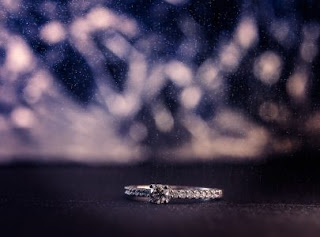UNDERSTANDING LAB GROWN / NON MINED DIAMONDS
For centuries, diamonds have been one of the earth’s greatest and most sought-after treasures. Often associated with the virtue of strength, power, and love, these precious gems have been adorned by both women and men. But unfortunately, diamond mining has had its own challenges and continues to face scrutiny for human rights abuses and their detrimental impacts on the environment. Apart from the human suffering and ecological damage it has caused over the years, the reckless process involved with diamond mining can have irreversible effects on the ecosystem.
Considering the environmental and humanitarian toll of extracting these gems, millennials and conscious consumers are now moving towards sustainable or non mined diamonds.
What are lab grown diamonds?
Analogous to the concept of test-tube babies and naturally born babies where the process is different but the output is exactly the same, lab grown diamonds are real diamonds grown in advanced labs, instead of being mined from below the earth’s surface. This leaves the earth free of mining manipulations, making these diamonds a sustainable choice for consumers. To add to that, because they are not mined, they save up on the mining costs and as a result lab grown diamonds are at least 30-50% cheaper than their mined counterparts.
Lab grown diamonds can be produced through two different methods –
1) the Chemical Vapor Deposition (CVD) process
2) the High Pressure and High Temperature (HPHT) process.
Chemical Vapor Deposition (CVD)
It is a technology that exactly replicates the diamond creation process that occurs below the surface of the earth. It all begins with a natural diamond seed, keeping the DNA intact. The seed is placed in the CVD plasma chamber and an intense environment of temperature and pressure is created just like that found in the earth. Gases are infused and along with the right combination of pressure and temperature conditions, carbon formations develop into rough diamonds. As a result, the chemical, thermal, optical, and physical properties of these diamonds are identical to that of natural diamonds – same size and same 4 Cs’ – Cut, Color, Clarity, Carat.
But one main significance is that CVD diamonds are 100% composed of carbon and are nitrogen-free. 98% of the world’s natural diamonds contain nitrogen. Only 2% of the world’s natural diamonds are the purest type – 100% carbon composed. World-renowned diamond grading & certifying labs (such as GIA, IGI and SGL) classify these diamonds as Type IIA. The shine, brightness & lustre of Type IIA diamonds is significantly better than any other diamond.
100% of CVD diamonds are composed entirely of carbon and classified as Type IIA. As a result, the shine & brilliance of CVD diamonds is unmatched and rare to find in their mined counterparts.
This technology is currently predominantly found developed in India, USA, Japan, Singapore.
High Pressure High Temperature (HPHT)
This process, on the other hand, doesn’t fully replicate the diamond creation process that occurs below the earth. It begins with a natural diamond seed but then uses graphite and a molten metal influx as part of its diamond creation process. As a result of the metal influx, HPHT diamonds have metal impurities and are not 100% carbon composed. As a result, unlike CVD diamonds, they are not the purest diamonds and do not receive a classification of Type IIA by the diamond grading labs.
This technology is currently predominantly found developed in China.
CVD vs HPHT diamonds: Which is better?
While both methods produce real diamonds composed of carbon, it is clear that non mined diamonds grown using the CVD process are 100% carbon as opposed to HPHT diamonds which include metal impurities. As a result CVD diamonds are the purest Type IIa diamonds and have a significantly better shine, brightness & luster compared to HPHT diamonds. These kinds of lustrous diamonds are also a rarity in mined diamonds.
Everything You Need to Know About CVD Diamonds : A Simple, Factual Guide

Comments
Post a Comment